From Rigel (*78) to Betelgeuze (*88) there were 10 right
ascension days:
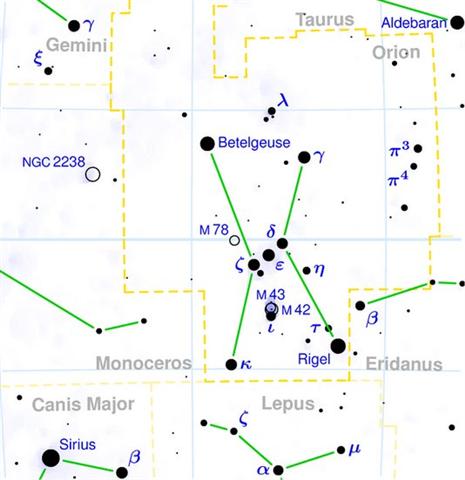
In the tresses of Pachamama there is a 'hickup' after 78
(cfr M78 above - located at declination 0º):
|
Counting in the tresses of Pachamama
from right to left: |
|
1 |
26 |
78 |
1 |
29 |
90 |
|
2 |
26 |
2 |
30 |
|
3 |
26 |
3 |
31 |
|
4 |
25 |
104 |
4 |
34 |
124 |
|
5 |
26 |
5 |
31 |
|
6 |
27 |
6 |
30 |
|
7 |
26 |
7 |
29 |
|
Total = 396 = 182 + 214 (= 364 + 32) |
|
84
+ 78 = 162 (June 11) |
Could this be due to right ascension *79, because the
Gregorian calendar had not placed the northern spring
equinox at the correct place?
... Ecclesiastically, the equinox is
reckoned to be on 21 March (even though the equinox occurs,
astronomically speaking, on 20 March in most years)
...
Hara. Harahara
1. Misaligned (of roofing, basketware, etc.); e harahara
nó te kete, the basket is misaligned (its strips are not
parallel. 2. A sort of taro. 3. Latrine, defecating ground.
Vanaga. 1. Pandanus. P Mgv.: ara, puhara,
pandanus (tree); hara, a bunch of pandanus fruit, old
pandanus. Mq.: faá haá, pandanus. Ta.: fara,
id. 2. Error, mistake, oversight, wrong; to err, to
confound, to mistake; manau hara, illusion; toua
hara, discussion without knowing the object. P Mgv.:
ara, arara, defective, abortive, to miss, to
fail, a fault, a quarrel; hara, a fault, a mistake,
an error, a dispute, a quarrel, undisciplined. Mq.: hara,
a rake, libertine. Ta.: hara, sin, fault, crime.
Churchill.
|
10 + 2 variants of taro brought
by Oti from the plantation of Teke: |
|
1 |
*70 |
ngeti uri. |
a Teke. a Oti. |
|
2 |
*71 |
ngeti tea. |
|
3 |
*72 |
he ngaatu. |
|
4 |
*73 |
he tuitui koviro. |
|
5 |
*74 |
he ketu anga mea. |
|
6 |
*75 |
he ketu takarua. |
|
7 |
*76 |
he teatea. |
|
8 |
*77 |
he ngu haha tea. |
|
9 |
*78 |
he mango. |
|
10 |
*79 |
he hahara rapanui |
|
1 |
*80 |
he ti. |
|
1 |
*81 |
he kape. |
|
6 he ketu takarua. |
7 he teatea. |
8 he ngu haha tea. |
9 he mango. |
10 he hahara rapanui |
The taro variant 9 he
mango. was presumably a verbal sign
corresponding to the glyph type Metoro
helped me name mago - a sign of
the tail (end):
 |
180 |
 |
|
5 |
186 |
|
vaha mea |
mago |
|
182 days |

Hara. Harahara 1.
Misaligned (of roofing, basketware, etc.);
e harahara nó te kete, the basket is
misaligned (its strips are not parallel. 2.
A sort of taro. 3. Latrine, defecating
ground. Vanaga. 1. Pandanus. P Mgv.: ara,
puhara, pandanus (tree); hara,
a bunch of pandanus fruit, old pandanus.
Mq.: faá haá, pandanus. Ta.: fara,
id. 2. Error, mistake, oversight, wrong; to
err, to confound, to mistake; manau hara,
illusion; toua hara, discussion
without knowing the object. P Mgv.: ara,
arara, defective, abortive, to miss,
to fail, a fault, a quarrel; hara, a
fault, a mistake, an error, a dispute, a
quarrel, undisciplined. Mq.: hara, a
rake, libertine. Ta.: hara, sin,
fault, crime. Churchill.
→ the name of
the 10th taro variant he hahara rapanui
had no final dot. |
|
APRIL 1
(59 + 32) |
2 |
3 (*13) |
4 |
5 (95) |
 |
 |
 |
 |
 |
|
Ga1-11 |
Ga1-12 |
Ga1-13 |
Ga1-14 |
Ga1-15 |
|
HAEDUS II
= η Aurigae
(75.9) |
5h (76.1)
ε
Leporis (76.0),
CURSA
(Footstool)
=
β
Eridani
(76.4),
λ
Eridani (76.7)
*35.0 = *76.4 - *41.4 |
μ Aurigae, μ Leporis (77.6) |
ĸ Leporis (78.0),
RIGEL
(Foot)
=
β
Orionis
(78.1),
Flaming Star = IC405
(78.2),
CAPELLA
=
α
Aurigae
(78.4),
ο
Columbae,
τ
Orionis (78.8)
*37.0 = *78.4 - *41.4
THUBAN (α Draconis)
|
λ Aurigae (79.0), λ Leporis (79.6), ρ
Aurigae (79.7)
ARCTURUS (α Bootis) |

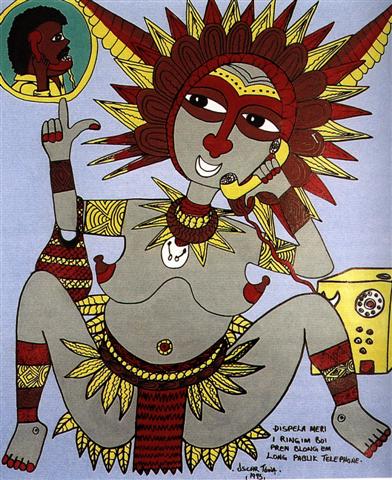
|
 |
 |
|
hanau |
RIGEL & CAPELLA
|
Hanau. 1. Race,
ethnic group. Hanau eepe, the
thick-set race; hanau momoko, the
slender race (these terms were mistranslated
as 'long-ears' and 'short-ears'). 2. To be
born. Hanau tama, pregnant woman;
vî'e hanau poki, midwive (also: vî'e
hakaa'u). Vanaga. To be born;
vie hanau, midwife. P Pau.: fanauga,
child, descendant, progeny. Mgv.: hanau,
to be born, to be brought into the world.
Mq.: fanau, hanau, to be born,
to lie in, to bring into the world. Ta.:
fanau, to be born, to lie in. Churchill. |
|
June 4 |
5 |
6 (157
= 314 / 2) |
7 (94 + 64) |
8 (*444) |
|
°May
31 (151) |
°June
1 |
2
(*73) |
3 (94 + 60) |
4 (*440) |
|
'May 8
(128) |
9 |
10 (*50) |
11 (94 + 37) |
12 (*52) |
|
"April 24
(114) |
Vaitu Nui 25 (*35) |
26 (4 * 29) |
27 (94 + 23) |
28 (118 = 4 * 29) |
|
... The Explorers had
left their old homeland in "April 25 (115) -
implying the synodic cycle of Mercury - and
they had returned
half a year later, in "October 25 (298 = 115
+ 183), which was 10 days after the arrival
of the Royal Double Canoe ...
... Ganz ähnlich is der Name 'Gott von
Duazag' des Gottes Nabū ... zu
erklären. Er bezeichnet
ihn als den Gott des Wachtstums, welches als
aus dem Osten stammend betrachtet wird, weil
die Sonne, die das Wachstum bringt, im Osten
aufgeht. Dass aber Nabū als
Ost-Gott aufgefasst wurde, hängt damit
zusammen, dass sein Stern, der Mercur, nur
im Osten oder Westen sichtbar ist ...

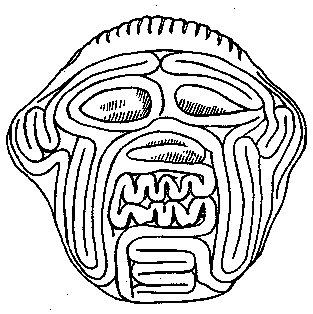  |
|
CLOSE TO
THE FULL MOON: |
|
OCT 1 (91 + 183) |
2 (275) |
3 |
4 |
5 |
|
17h (258.7)
ARRAKIS = μ Draconis
(258.7) |
Mula-19 (The Root)
SABIK
(The Preceding One)
=
η
Ophiuchi
(259.7),
η
Scorpii (259.9) |
NODUS I =
ζ
Draconis
(260.0),
π
Herculis (260.7),
RAS ALGETHI
(Head of the Giant)
=
α
Herculis
(260.8) |
SARIN =
δ
Herculis
(261.0),
ο
Ophiuchi (261.4)
*220.0 = *261.4 - *41.4
ALRISHA (α Piscium) |
ξ Ophiuchi (262.2), θ Ophiuchi, ν Serpentis,
ζ, ι Apodis (262.4), ι Arae (262.8), ρ
Herculis (262.9)
*221.0 = *262.4 - *41.4 |
|
Dec 4 |
5 |
6 (*260) |
7 |
8 (342) |
|
°Nov 30 |
°Dec 1 (335) |
*(8 * 32) |
3 |
4
|
|
'Nov 7 |
8 (*232) |
9 |
10 (314) |
11 |
|
"Oct 24 |
Tangaroa Uri 25 |
26 |
27 (300) |
28 |
|
... Page E:86 tells about Makoi being
left behind on Easter Island when the
remaining 5 Explorers sailed home to Hiva.
From there (Tangaroa Uri 25) to the
day when Hotu became worried about
where Oto Uta was, i.e. in
Tangaroa Uri 30, there were 5 days:
|
April 25 (115) |
5 + 56 |
June 25 (176) |
5 + 116 |
Oct 25 (298) |
5 + 56 |
Dec 25 (359) |
5 + 116 |
|
61 |
2 * 61 |
61 |
2 * 61 |
|
183 |
183 |
|
366 = 2 * 183 = 6
* 61 |
And from the autumn equinox (265) at Antares
to the Sting of the Scorpion (υ
Scorpii) there were 15 days
...

... the tubers [of
kape] had to be kept in the earth-oven
for 15 (sic) days in order to
eliminate some of the poisonous components
... 2 * 175
(Day of St John) = 350 = 365 - 15.
... Thus the
regular old Roman year ended with Februarius
23 and it was 350 nights long, 25 fortnights
...
 |
|
1 he
ti. |
1
he kape. |
|
Ti
by lying with Tattooing made the ti
plant (he ti ki ai ki roto ki a
he ta ka pu te ti). Burnt ti
leaves were used to produce the black
dye for tattooing.
... To be
in heat, to copulate, to embrace;
concupiscence, fornication, impurity;
lascivious, impure (ai) ...

Kape.
'Bitter-taro' (Alocasia macrorrhiza).
In 1957 kape was still cultivated
in much the same way as dry taro. It is
a type of food to be eaten during times
of famine. According to Fuentes
(1960:856), the tubers had to be kept in
the earth-oven for 15 (sic) days
in order to eliminate some of the
poisonous components. Barthel 2. Arum,
yam. Churchill.
Bitterness by doing it with Bad-taste
produced the kape (mangeongeo
ki ai ki roto he rakerake ka pu te kape). |
|
APRIL
6 (96 = 3 * 32) |
7
(*17) |
 |
 |
|
Ga1-16 |
Ga1-17 |
|
Shur-narkabti-sha-iltanu-5 (Star in the
Bull towards the north)
σ
Aurigae (80.4),
BELLATRIX (Female Warrior)
=
γ
Orionis,
SAIF AL JABBAR (Sword of the Giant)
=
η
Orionis
(80.7),
ELNATH (The Butting One)
=
β
Tauri = γ Aurigae
(80.9)
*39.0 = *80.4 - *41.4 |
ψ
Orionis (81.1),
NIHAL (Thirst-slaking Camels)
=
β
Leporis
(81.7) |
 |
|
June
9 (*445 = *365 + *80) |
10
(161) |
|
...
The month, which takes its name from
Juppiter the oak-god, begins on June
10th and ends of July 7th. Midway comes
St. John's Day, June 24th, the day on
which the oak-king was sacrificially
burned alive. The Celtic year was
divided into two halves with the second
half beginning in July, apparently after
a seven-day wake, or funeral feast, in
the oak-king's honour
...
 |
|
°June
5 (156) |
6
(*77) |
|
'May
13 |
14
(*54) |
|
"April 29 (*39) |
Vaitu
Nui 30 |
|
CLOSE
TO THE FULL MOON: |
|
OCT 6
(279 = 9 * 31) |
7
(*200) |
|
β, γ Arae (263.3), κ Arae (263.5), σ
Ophiuchi (263.6) |
LESATH (Sting) = υ Scorpii,
δ
Arae (264.7),
CHOO
(Club) = α Arae
(264.9) |
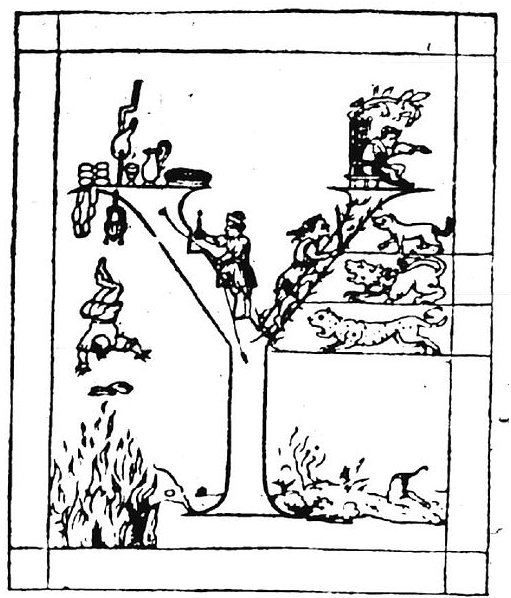
...
For they say that the course of human
life resembles the letter Y, because
every one of men, when he has reached
the threshold of early youth, and has
arrived at the place 'where the way
divides itself into two parts', is in
doubt, and hesitates, and does not know
to which side he should rather turn
himself´...


 |

|
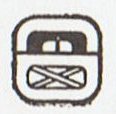 |
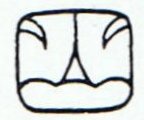 |
 |
|
uo ('imprisoned') |
akbal
(night) |
quincunx (yellow) |
... we see the Xul-animal, all his facial
marks appearing, hanging by his tail from the
sky-band. With tail and both paws he holds flaming
torches. Above in the text [Dresden Codex, 55.g.] we
can see our form 19.3.1;

...
the superfix is a club
[cfr Choo, α Arae], constantly appearing as an
instrument of attack; it is neither spear nor knife,
and also shows the same marks as are seen on wooden
posts, for the knots; the prefix we shall later see
defined as the conventionalized flames of firewood
... These three elements united, the cauac,
or Storm, relámpago, rayo or lightning
bolt as rendered in the above cited vocabularies,
with the club or stick as superfix, and the flames
as prefix, give a complete compound for
'thunderbolt' ... |
|
Dec 9
(343 = 7 * 49 = 279 + 8 * 8) |
10
(161 + 183) |
|
°Dec
5 (339) |
6
(*260) |
|
'Nov
12 (*236 = 8 * 29½) |
13
(317 = 161 + 12 * 13) |
|
"Oct
29 (*222) |
Tangaroa Uri 30 |
|
1 he hauhau. |
1 he mahute. |
1 he ngaatu |
|
Gaatu, totora
reed. Vanaga. Gaatu 1.
Bulrush, reed. 2.
(gatu). Churchill.Gatu.
Gaatu, totora reed. Gatu:
1. To press, to tighten, to squeeze.
2. To pack tight. 3. To pull
suddenly, to give a jerk. I ka
hakarogo atu, ku eke á te kahi, he
gatu mai, as soon as he felt the
tuna be, he pulled in [the line]
with a sharp jerk. 4. To kick. 5.
E gatu te hagu, to wait for
something impatiently (gatu,
breath). 6. Shortly, very soon.
He tu'u gatu, he is coming
shortly, he is just about to arrive.
Vanaga. Bulrush, reed. Gaatu
(gatu) 1. To feel of, to
pinch, to throttle with the hands,
to touch, to press (gaatu);
gatuga, pressure; gatugatu,
to trample down. T Mgv.: natu,
to press out linen, to squeeze a
person or a sore place. Mq.: natu,
to pinch. Ta.: natu, to
pinch, to bruise. 2. To suppurate.
3. Gatu mai gatu atu, sodomy.
Gatua (gatu 1),
tractable, to press.
Churchill. Scirpus riparius
var. paschalis. Barthel 2.
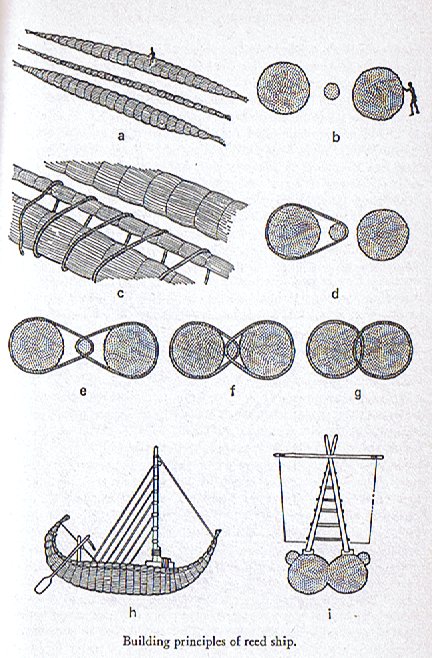
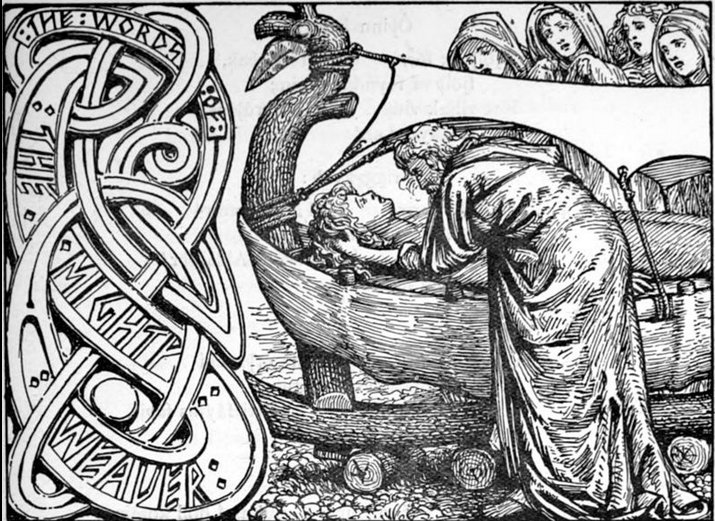
... All this,
which in so many ways parallels
the normal imagery of the Old
World culture-hero myths,
telling of the one who is gone,
dwells underground in a happy,
timeless land, as lord of the
realm of the happy dead, like
Osiris, but will rise again,
we can read
without
surprise. But what is surprising
indeed was the manner of
Quetzalcoatl's actual
return. The priests and
astrologers did not know in what
cycle he was to reappear;
however, the name of the year
within the cycle had been
predicted, of old, by
Quetzalcoatl himself. Its
sign was 'One Reed' (Ce Acatl),
which, in the Mexican calendar,
is a year that occurs only once
in every cycle of fifty-two. But
the year when Cortes arrived,
with his company of fair-faced
companions and his standard, the
cross, was precisely the year
'One Reed'. The myth of the dead
and resurrected god had
circumnavigated the globe
...
|
1 |
Cipactli (alligator) |
11 |
Ozomatli
(monkey) |
|
2 |
Ehecatl
(wind) |
12 |
Malinalli
(grass) |
|
3 |
Calli
(house) |
13 |
Acatl
(reed) |
|
4 |
Cuetzpallin (lizard) |
14 |
Ocelotl
(jaguar) |
|
5 |
Coatl (serpent) |
15 |
Cuauhtli
(eagle) |
|
6 |
Miquitztli (death) |
16 |
Coz-cacuauhtli (buzzard) |
|
7 |
Mazatl (deer) |
17 |
Ollin
(movement) |
|
8 |
Tochtli
(rabbit) |
18 |
Tecpatl
(flint knife) |
|
9 |
Atl
(water) |
19 |
Quiahuitl
(rain) |
|
10 |
Itzcuintli (dog) |
20 |
Xochitl
(flower) |
|
20 * 13 = 260 and 13 *
13 = 169 = 260 - 91.
 |
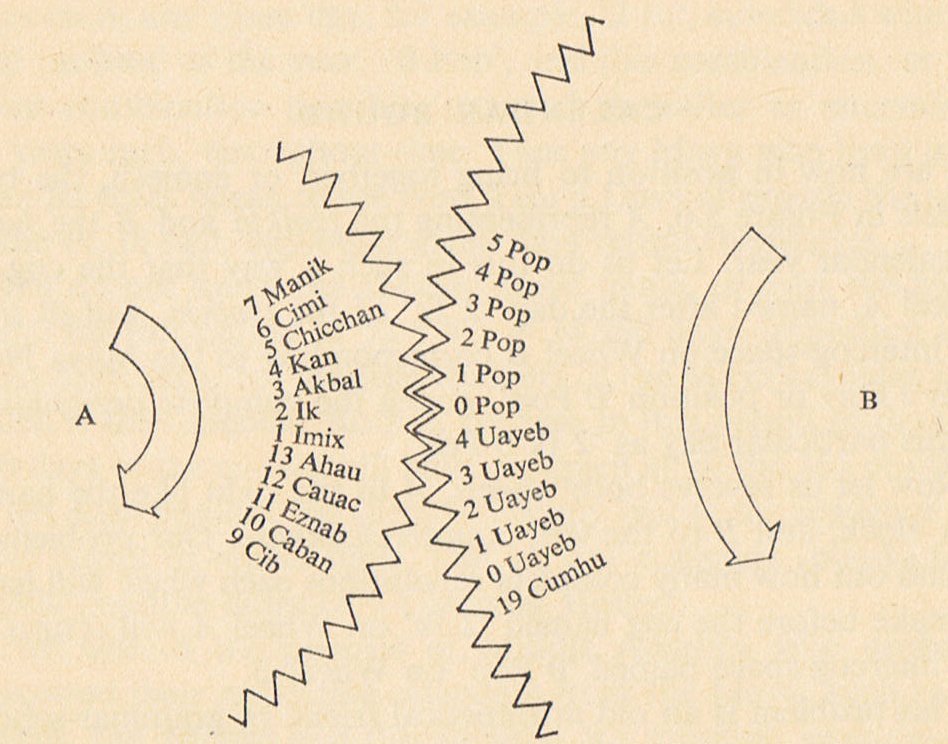
|
|
APRIL 8 |
9
(*19) |
10 (100 = 88 + 12) |
 |
 |
 |
|
Ga1-18 |
Ga1-19 |
Ga1-20 |
|
KHUFU
MINTAKA (Belt)
=
δ
Orionis,
υ
Orionis (82.4),
χ
Aurigae (82.5),
ε
Columbae (82.6)
*41 = *82.4 - *41.4 |
KHAFRE
Al Hak'ah-3 (Brand) /
Mrigashīrsha-5 (Stag's Head) /
Turtle Head-20 (Monkey) /
Mas-tab-ba-tur-tur (Little Twins)
ARNEB =
α Leporis, Crab Nebula = M1 Tauri
(83.0,
φ¹
Orionis (83.1),
HEKA = λ Orionis,
ORION NEBULA
= M42
(83.2),
φ²
Orionis (83.6),
ALNILAM (String of Pearls)
= ε Orionis
(83.7) |
MENKAURE
Three Stars-21 (Gibbon) /
Shur-narkabti-sha-shūtū-6 (Star in
the Bull towards the south)
/
ANA-IVA-9 (Pillar of exit)
HEAVENLY GATE
= ζ Tauri,
ν
Columbae (84.0),
ω
Orionis (84.2),
ALNITAK (Girdle)
= ζ Orionis,
PHAKT (Phaet)
= α Columbae
(84.7) |
|
June 11 |
12 (163 = 136 + 27 = 263 - 100) |
13 (*84) |
|
°June 7 |
8 |
9
(*80) |
|
'May 15 (365 + 135 = 500) |
16 (136 = 8 * 29½ - 100) |
17 (*57) |
|
The Julian calendar had been 10 days
ahead at the time when Gregory XIII
launched his new calendar and then 2
more (days ahead) would have to be
subtracted if the change from the
Julian to the Gregorian calendar had
happened later at the time when the
King of Spain took command over
Easter Island in 20 November (324)
AD 1770. Which means 10 + 2 number
of taro varieties could have
referred not only to a change in the
number of months but also to number
of days needed to add in order to
return from the Gregorian to the
Julian dates.
|
59 |
 |
520 |
 |
13 * 37 |
 |
270 |
 |
|
Ab1-1 (→ 11) |
Ab7-26 (→ 12 * 36) |
Aa5-7 |
Aa8-26 (→ 12 * 41) |
|
580 = 20 * 29 |
26 * 29 = 755 - 1 |
|
1334 = 5 * 254 + 64
=
46 * 29 = 1335 - 1 = 5 * 267
- 1
267 = September 24 |
|
236 (Moon) + 263 (Venus) =
499.
... Notably the Raven, who
was ascending in day 236 (=
8 * 29½) in Roman times
('August 24),
had moved ahead due to the
precession with 27 days to
'a clean cup' in day 263 at
the time of rongorongo ...
.jpg) |
|
|
"May 1 (121 = 11 * 11) |
2 |
3
(*43) |
|
... the real surprise revealed by
Bauval's astronomical calculations
was this: despite the fact that some
aspects of the Great Pyramid did
relate astronomically to the Pyramid
Age, the Giza monuments as a whole
were so arranged as to provide a
picture of the skies (which alter
their appearance down the ages as a
result of the precession of the
equinoxes) not as they had looked in
the Fourth Dynasty around 2500 BC,
but as they had looked - and only
as they had looked - around the year
10,450 BC ...

.jpg)
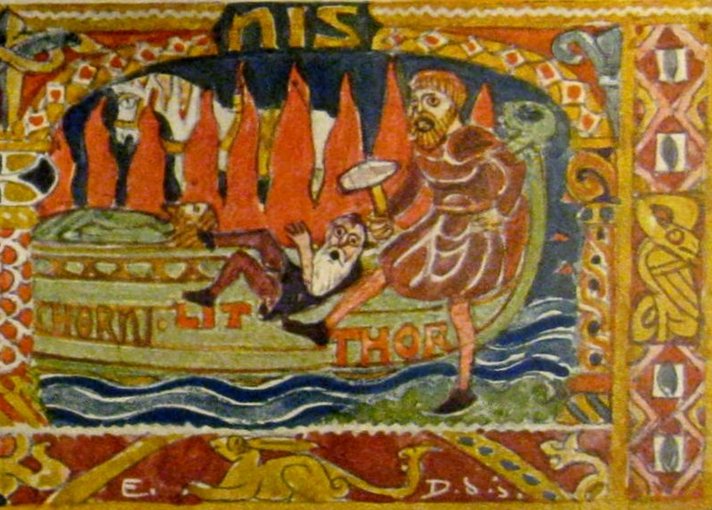
... According to Gylfaginning,
following the murder of Baldr by
Loki, the other gods brought his
body down to the sea and laid him to
rest on the ship. They would have
launched it out into the water and
kindled a funeral pyre for Baldr but
were unable to move the great vessel
without the help of the giantess
Hyrrokkin, who was sent for out of
Jötunheim. She then flung the ship
so violently down the rollers at the
first push that flames appeared and
the earth trembled, much to the
annoyance of Thor. Along with Baldr,
his wife Nanna was also borne to the
funeral pyre after she had died of
grief. As Thor was consecrating the
fire with his hammer Mjolnir, a
dwarf named Litr began cavorting at
his feet. Thor then kicked [gaatu]
him into the flames and the dwarf
was burned up as well ... |
|
CLOSE TO THE FULL MOON: |
|
OCT 8 |
9 |
10 (283) |
|
Al Shaula-17
ALWAID (Mother Camels) =
β
Draconis, MAASYM (Wrist) =
λ
Herculis
(265.1),
SHAULA (Sting)
=
λ
Scorpii
(265.3),
KUMA =
ν
Draconis
(265.6),
σ
Arae (265.9)
HAMAL (α ARIETIS) |
RAS ALHAGUE
(Head of the Serpent Charmer)
= α Ophiuchi
(266.1),
SARGAS = θ Scorpii (266.3),
μ Ophiuchi, π Arae (266.5),
NAN HAE (Southern Sea) = ξ Serpentis
(266.6), AL
DHĪLI (The Wolf)
= ω Draconis,
ι Herculis (266.7) |
λ
Arae (267.1),
GIRTAB (Seizer)
=
κ Scorpii,
ο
Serpentis (267.6),
DSIBAN (Wolf Pair)
=
ψ
Draconis
(267.9) |
|
Dec 11 (345) |
12 |
13 |
|
°Dec 7 (*261 = 9 * 29) |
8 |
9
(343 = 7 * 7 * 7 |
|
'Nov 14 (318) |
15 |
16 (*240) |
|
"Oct 31 (304) |
"Nov 1 (*225) |
2 |
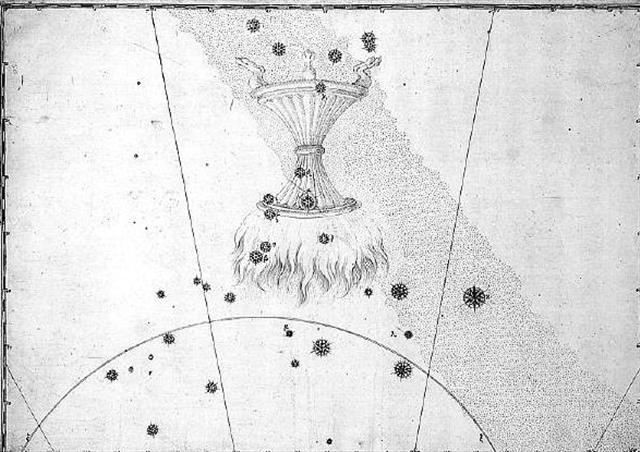
... It is known that in the final
battle of the gods, the massed
legions on the side of 'order' are
the dead warriors, the 'Einherier'
who once fell in combat on earth and
who have been transferred by the
Valkyries to reside with Odin in
Valhalla - a theme much rehearsed in
heroic poetry. On the last day, they
issue forth to battle in martial
array. Says Grimnismal (23): 'Five
hundred gates and forty more - are
in the mighty building of Walhalla -
eight hundred 'Einherier' come out
of each one gate - on the time they
go out on defence against the Wolf.'
That makes 432,000 in all, a number
of significance from of old. This
number must have had a very ancient
meaning, for it is also the number
of syllables in the Rigveda. But it
goes back to the basic figure
10,800, the number of stanzas in the
Rigveda (40 syllables to a stanza)
[40 * 270 = 10800] which, together
with 108, occurs insistently in
Indian tradition, 10,800 is also the
number which has been given by
Heraclitus for the duration of the
Aiōn, according to Censorinus (De
die natali, 18), whereas Berossos
made the Babylonian Great Year to
last 432,000 years. Again, 10,800 is
the number of bricks of the Indian
fire-altar (Agnicayana). 'To quibble
away such a coincidence', remarks
Schröder, 'or to ascribe it to
chance, is in my opinion to drive
skepticism beyond its limits.'
...
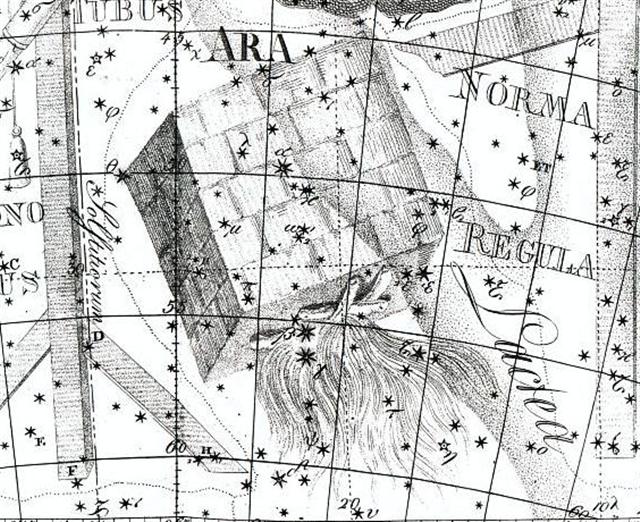 |
In the landscape suddenly - as if by the action of some powerful
god hurling down fire from above - flames appeared. The time was
due, because there was no water any more, after the great Rishi
(Canopus) had consumed it all:

... The
Pythagoreans make Phaeton fall into Eridanus, burning
part of its water, and glowing still at the time when the
Argonauts passed by. Ovid stated that since the fall the Nile
hides its sources. Rigveda 9.73.3 says that the Great Varuna has
hidden the ocean. The Mahabharata tells in its own style why the
'heavenly Ganga' had to be brought down. At the end of the
Golden Age (Krita Yuga) a class of Asura who had
fought against the 'gods' hid themselves in the ocean where the
gods could not reach them, and planned to overthrow the
government. So the gods implored Agastya (Canopus, alpha
Carinae = Eridu) for help. The great Rishi did as he was bidden,
drank up the water of the ocean, and thus laid bare the enemies,
who were then slain by the gods. But now, there was no ocean
anymore! Implored by the gods to fill the sea again, the Holy
One replied: 'That water in sooth hath been digested by me. Some
other expedient, therefore, must be thought of by you, if ye
desire to make endeavour to fill the ocean
...
And everythíng ('all sorts of things', he huru o te me'e)
was therefore very dry. At the time of the Bull the great
Agastya
star
had been located in APRIL 21 (111), but since
then his star had been pushed forward in the year to day 111 +
64 = 175 (St John's Day) = *95 (= 364 / 4 days after the 3-25,
the Julian equinox).
... The Pope wanted to restore the edicts
concerning the date of Easter of the Council of Nicaea of AD
325. (Incidentally, the date of Easter itself is fixed by an
approximation of lunar cycles used in the Hebraic calendar, but
according to the historian Bede the English name 'Easter' comes
from a pagan celebration by the Germanic tribes of the vernal -
spring - equinox ...

And at the time of Bharani the star of Agastya (Eridu) had been in right
ascension day *95 - *41 = *54 ("May 14) - i.e., 50 right
ascension days after the Julian equinox.
At the time of rongorongo the position of Canopus was *6 days
before Sirius brought down rain (ûa).

And at that time of the year the
Full Moon was visible close to the 3 bow stars in Sagittarius -
Kaus Medius (*277), Kaus Australis (*278), and Kaus Borealis
(*279). *95 (Canopus) + *183 = *278 (Kaus Australis).
|
 |
|
ua |
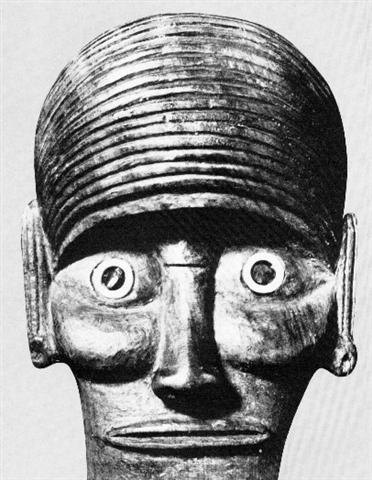
|
he huru o te me'e [E:69]
Huru. Custom,
tradition, behaviour,
manners, situation, circumstances; poki huru hare,
child who stays inside (to keep a fair complexion);
te huru o te tagata rivariva, a fine person's
behaviour; pehé te huru o Hiva? what is the
situation on the mainland? Huruhuru, plumage,
feathers (the short feathers, not the tail
feathers), fleece of sheep. Vanaga. Samoa: sulu, a torch; to light by a torch;
sulusulu,
to carry a torch; susulu, to shine (used of
the heavenly bodies and of fire). Futuna: susulu,
the brightness of the moon. Tonga: huluaki,
huluia, huluhulu, to light, to
enlighten; fakahuhulu, to shine; iuhulu,
a torch or flambeau, to light with a torch. Niuē:
hulu, a torch; huhulu, to shine (as the
moon). Maori: huru, the glow of the sun
before rising, the glow of fire. Churchill 2. |
|
1 |
he |
ngaatu (*84) |
a Oti. |
|
1 |
tavari |
|
1 |
riku |
|
1 |
ngaoho |
|
1 |
naunau. |
|
1 |
uku koko |
|
1 |
nehenehe |
|
1 |
poporo. |
|
1 |
kavakava atua |
|
1 |
kohe. |
|
1 |
nehenehe [sic!] |
|
1 |
pua |
|
1 |
harahara |
|
1 |
hua taru. |
|
1 |
makere |
|
1 |
hata. |
|
1 |
tuere heu. |
|
1 |
tureme |
|
1 |
matie. |
|
1 |
pua nakonako. |
|
1 |
ipu ngutu |
... It was 4 August 1968, and it was the
feast day of Saint Dominic, patron of Santo Domingo Pueblo,
southwest of Santa Fe. At one end of the hot, dusty plaza, a
Dominican priest watched nervously as several hundred dancers
arranged in two long rows pounded the earth with their
moccasined feet as a mighty, collective prayer for rain,
accompanied by the powerful baritone singing of a chorus and the
beat of drums. As my family and I viewed this, the largest and
in some ways the most impressive Native American public
ceremony, a tiny cloud over the Jémez Mountains to the northwest
got larger and larger, eventually filling up the sky; at last
the storm broke, and the sky was crisscrossed by lightning and
the pueblo resounded with peals of rolling thunder
...
Lightning and thunder brought both fire and sweet rain.
Thus they meant the same and here the cycle was renewed.
... He was moreover confronted with
identifications which no European, that is, no average rational
European, could admit. He felt himself humiliated, though not
disagreeably so, at finding that his informant regarded fire and
water as complementary, and not as opposites. The rays of light
and heat draw the water up, and also cause it to descend again
in the form of rain. That is all to the good. The movement
created by this coming and going is a good thing. By means of
the rays the Nummo draws out, and gives back the life-force.
This movement indeed makes life. The old man realized that he
was now at a critical point. If the Nazarene did not understand
this business of coming and going, he would not understand
anything else. He wanted to say that what made life was not so
much force as the movement of forces. He reverted to the idea of
a universal shuttle service. 'The rays drink up the little
waters of the earth, the shallow pools, making them rise, and
then descend again in rain.' Then, leaving aside the question of
water, he summed up his argument: 'To draw up and then return
what one had drawn - that is the life of the world'
...
And the race of Wise Man took after.
Slash-and-burn agriculture was born.


|





























.jpg)

.jpg)









